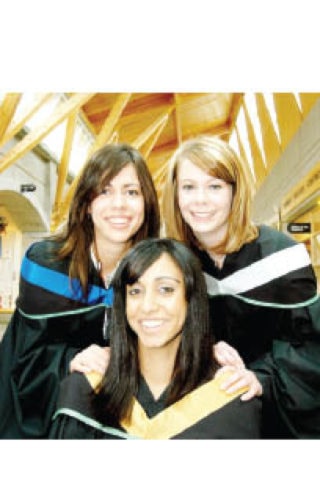The bright light on the horizon addressing the shortage of physicians across the Northwest is the University of Northern B.C.’s (UNBC) Northern Medical Program.
Northern Health faces several challenges when it comes to recruiting physicians, Dr. Geoff Appleton, Northwest Medical Director for Northern Health said, due to our rurality and isolation.
But by training medical professionals up here, it not only helps acclimatize them to the region, but they’re then taken in for their residency program throughout the smaller communities, showing them first-hand the benefits, Appleton said.
“We have students here in Terrace in the northern medical program in resident positions and the more of these come through the more they kind of get to like the north and are trained,” Appleton said. “It’s a huge help.”
Right now a lot of the graduates of the program are staying in the north, Prince George specifically, Appleton said, which is a success for Northern Health, but what he’d like to see the program do is expand further to smaller, more rural communities. Communities such as Houston, where they’re dealing with hundreds of people without a doctor; patients who now have to travel for medical assistance.
“We’re hoping that it falls out to our smaller areas, because they get to realize the advantages of working up here, “Appleton said, who works in Terrace. “It’s a nice lifestyle, and you’re not paying Vancouver Health’s prices.”
They took their first students in 2004, Dr. David Snadden, Vice Provost of Medicine with UNBC said, with their first graduates going into residency programs in 2008. General practitioners, who then have a two-year residency, have emerged fully licensed just six months ago. Specialists have to go through a five year residency program before being allowed to take the exams to become fully licensed.
“What we’ve tried to do … is to have an admissions system for a northern medical program which seeks to find students we think are more likely to be successful in their education in a rural area, and therefore more likely to settle in the rural area,” Snadden said.
In the long-term, rural students, or urban students with a rural affinity, are more likely to choose to stay in the smaller communities, communities that are often faced with the most challenges in recruiting physicians.
In fact, roughly half the students they have now come from northern B.C., from communities like Kitimat, Smithers, and Houston. In total, 85 per cent of their students come from rural B.C.
“We’ve got a smattering of students coming from northern areas,” Snadden said. “I would really like to encourage those students who are thinking of going to university and thinking of future careers to consider medicine, because we really want to try to recruit as many as we can from rural areas.”
And it’s not just Prince George that the students are acclimatized to, he said. There is a mandatory course between second and third years requiring students to intern at communities like Houston or Hazelton; smaller communities than Prince George where procedures may be a tad different, and certainly the pace and environment.
“Seeing rural practices, working with physicians, is really important for students,” Snadden said. “We’re trying to make sure our students are immersed in rural issues.”
It’s a program that has been praised not just in B.C., but from other provinces as well, Snadden said, with students applying from across Canada to take their program.
It has been fairly successful at retaining these graduates for smaller municipalities, with one remaining in Fort St. John where their residency was, several more remaining in Prince George, and for those that did head down south, the majority have chosen to practice in smaller communities down there, as well.
“There’s definitely been some success,” Snadden said. “Whatever we’re doing, our students are not being turned off rural life, some students continue to explore it.”
There has been a remarkable amount of interest in the program from students interested in these opportunities, Snadden said, and in doing their residency throughout the northwest.
There are challenges, Snadden acknowledged, but the Northern Medical Program is one method to showcase not only the benefits of practicing here, but of the highlights of northern living.
“It is a difficult issue that’s so important for our communities, because a lot of this is sustainability based,” Snadden said.
